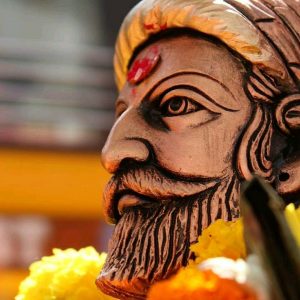Origin of Marathas
The origins of the Maratha Empire can be traced back to a series of rebellions led by Chhatrapati Shivaji Maharaj against the rule of the Bijapur Sultanate and later the Mughal Empire. Based on the principle of Hindawi Swarajya, he carved out an independent Maratha kingdom with Raigad as the capital.
In 1674, he was crowned Chhatrapati (sovereign) of the new Maratha Kingdom after successfully defending it from Mughal incursions. At the time of his death, the kingdom was defended by a series of forts and well equipped naval establishments. By the time of his grandson’s rule in the early 18th century, the kingdom had increased its size and transformed into a full-fledged empire.
Chhatrapati Shivaji Maharaj (born on February 19, 1630) was succeeded by his eldest son Sambhaji (also known as Shambhu Raje) in 1681. He continued the expansion policy of his father defeating the Portuguese and Chikka Deva Raya of Mysore to expand his borders. These developments were alarming enough for Mughal Emperor Aurangazeb (born on 3rd November 1618) to launch an expedition against the Marathas.
succeeded by his eldest son Sambhaji (also known as Shambhu Raje) in 1681. He continued the expansion policy of his father defeating the Portuguese and Chikka Deva Raya of Mysore to expand his borders. These developments were alarming enough for Mughal Emperor Aurangazeb (born on 3rd November 1618) to launch an expedition against the Marathas.
In the 8 years of wars that followed, Shambhu Raje (born on May 14 1657) fought Aurangzeb all along the Deccan region, never losing any battle or his forts.
Then in 1689, Sambhaji was ambushed by Mughal forces while on his way to meet his commanders at Sangameshwar. He was imprisoned and later executed by Aurangazeb to demoralise the Maratha forces, but they still fought on.
Aurangazeb later proceeded to occupy the capital of Raigad, holding the family of Chhatrapati Sambhaji hostage. Sambhaji’s half-brother Rajaram was crowned Chhatrapati in 1690, the coronation had taken place at Jinji fort in modern-day Tamil Nadu, assuming the regency for the seven-year-old son of Shambu Raje, Shahu.
Aurangzeb continued in his attacks against the Marathas and even caused Junji fort after three attempts. Chhatrapati Rajaram escaped to Berar and died at Sinhagad in Pune in 1700.
